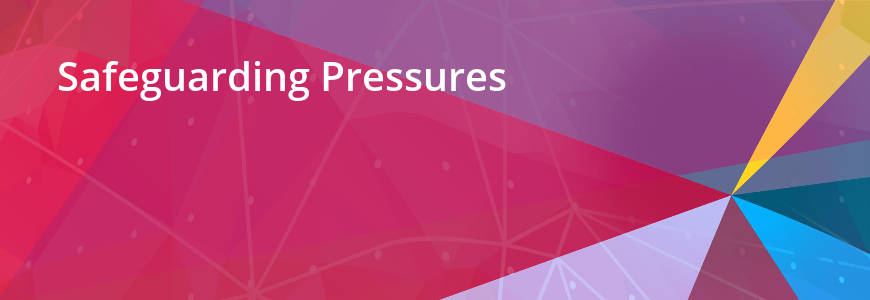Violence against women and girls

This year it feels like the pervasive issue of violence against women and girls in our society has been brought into the light, with far greater media coverage and public discourse than I can recall for some time. Sadly, the tragic deaths of Sarah Everard, Bibaa Henry, Nicole Smallman, Sabina Nessa and dozens of other women have acted as the catalyst for this long overdue debate.
Our understanding of the scale of violence against women and girls is formed from a patchwork of national crime statistics that largely fail to capture the experiences of, and impact on, children and young people. However, domestic abuse continues to be the most prevalent factor in children’s social care assessments and recent surveys have shown that a staggering 97 to 99% of women had experienced violence, including harassment, assault or rape at the hands of men.
Recent reviews by the inspectorates bring the issue into stark relief. Ofsted carried out a rapid review following the publication of tens of thousands of disclosures of sexual harassment and abuse in schools, colleges and universities via the Everyone’s Invited website. The final report makes clear that a wider response is required beyond new guidance for schools or changes to the curriculum such is the normalisation of violence and abuse. The significant volume of incidents that happen online or outside of schools and colleges which underlines the need to co-opt parents, carers and communities to bring about change.
The Ofsted report emphasises the important role of local safeguarding partnerships. The need for a multi-agency response in responding to this issue is echoed in a recent HMI Constabulary report commissioned by the Home Secretary, which exceptionally called for fundamental cross-system changes to tackle what was described as an “epidemic” of violence against women and girls.
Beyond the work of public agencies in responding to abuse and supporting victims, societal change is urgently required to challenge the misogyny, prejudice, harassment and abuse that remains all too common. This needs clear leadership and a comprehensive plan of action, that draws together different government departments, reforms and funding streams. From implementation of the new violence against women and girls strategy and the Domestic Abuse Act 2021 to the embedding of the new relationships and the development of the Online Harms Bill.
Whilst it is right to focus on criminal justice responses, prevention must be given more attention and funding in order to turn the tide on this silent epidemic. Given the scale of this issue, ADCS believes a public health style approach is needed; prevention, protection and the repair of harm should be central to systematic efforts tackle violence against women and girls, including domestic abuse. Education is a powerful tool to help children and young people to understand what healthy relationships look like and the importance of consent, respect, tolerance and equality. The needs of boys and young men are central to this.
Stopping abuse happening in the first place must be our goal. Changes in policy and practice will not be enough unless we address the social, cultural and moral issues surrounding the root causes of violence, abuse and exploitation. A wide-ranging public campaign to tackle the entrenched societal norms and pervasive public attitudes whilst deterring existing (or potential) perpetrators is long overdue. There is an increasingly urgent need to consider the rapid growth of online abuse and coercion, which has sadly been exacerbated during the pandemic period.
We will have to face many uncomfortable truths on this journey but it will be worth it if we can prevent future misery, fear and harm.
Charlotte Ramsden, ADCS President and Strategic Director for People at Salford City Council.
This article was first published in the LGC.
Related Articles
John Pearce comments on measures to introduce mandatory reporting in the...
In Safeguarding & Child Protection
John Pearce responds to the National Panel’s annual report.
In Safeguarding & Child Protection
John Pearce on the government’s response to the Safeguarding children with...
In Safeguarding & Child Protection
ADCS responds to a further consultation on mandatory reporting by the Home...
In Safeguarding & Child Protection
Unaccompanied asylum seeking (UAS) children have received substantial media...
In Asylum
ADCS response to the DfE’s consultation on updates to its information...
In Safeguarding & Child Protection
ADCS has responded to the recent DfE consultation on updates to Working...
In Safeguarding & Child Protection
ADCS response to the government consultation on a new mandatory reporting duty.
In Safeguarding & Child Protection
John Pearce comments on the government response to the final report of the IICSA
In Safeguarding & Child Protection
ADCS response to the Child Safeguarding Practice Review Panel’s phase two...
In Safeguarding & Child Protection
John Pearce comments on mandatory reporting of csa
In Safeguarding & Child Protection
Steve Crocker responds to the Children’s Commissioner’s report on...
In Safeguarding & Child Protection
ADCS President Steve Crocker said: “The Association has significant concerns...




